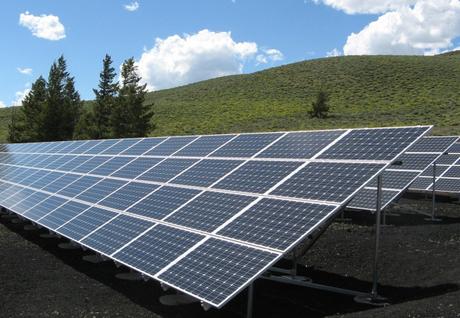Are you aware that the sun can cover the world's energy needs for a year by just generating power in one minute? The truth is, the sun can generate energy that an entire population would consume in 27 years.
Thus, solar energy is not only a reliable energy source, but it is also efficient and cost-effective. Aside from that, solar energy is also a renewable form of energy, which is good for the environment.

So, if you are planning to utilize solar power, the best thing for you to do is to get well acquainted with solar panels and how they vary for your perusal. There are many types of solar panels that you can choose from.
1. Monocrystalline Solar Panels
Monocrystalline solar panels are made from monocrystalline silicon. They are considered as the purest type of solar panels. They can easily be recognized since they have rounded edges and a uniform dark look. Because of the high purity of silicon, these solar panels have one of the highest efficiency rates.
Monocrystalline solar panels occupy less space, last longer, and have a high power output. However, these panels are one of the most expensive in the market. One good thing about monocrystalline solar panels is that they have more capacity to withstand high temperatures than polycrystalline solar panels.
2. Polycrystalline Solar Panels
Polycrystalline solar panels can easily be distinguished as they have squares. And their angles are not cut. Polycrystalline solar panels have a blue, speckled look, and they are made from melted raw silicon.
Polycrystalline solar panels involve a much affordable and faster process than the one used for monocrystalline solar panels. Polycrystalline panels are much cheaper, but also have lower efficiency compared to monocrystalline panels.
Polycrystalline panels have a shorter lifespan as they don't have much resistance to high temperatures. Despite the small differences with monocrystalline panels, polycrystalline panels function just as the same.
3. Thin-Film Solar Panels
If you are thinking of finding a less expensive option for solar panels, thin-film solar panels might be the way to go. The creation of thin-film solar panels is done by using a substrate to place one or more photovoltaic films, such as copper, silicon, or cadmium.
Thin-film solar panels are more comfortable to produce since they require fewer materials to be created. Thin-film solar panels are flexible as they can endure high temperatures. Even if these panels can be used for other applications, thin-film solar panels take up a lot of space.
Thin-film solar panels are not really ideal to be installed in residential homes. Since the lifespan of thin-film solar panels is shorter, they have the shortest warranties compared to other panels. However, if the location is spacious, thin-film solar panels can be used.
4. Amorphous Silicon Solar Cells
If you have used a solar-powered pocket calculator, you have already encountered amorphous silicon solar cells. They use a triple-layered technology that makes these solar panels flexible and lightweight. Because they are thin, amorphous silicon solar panels are more affordable than crystalline silicon ones.
5. Cadmium Telluride Solar Panels (CdTe)
This photovoltaic type of solar panels uses Cadmium Telluride, which produces solar cells at a very low cost. With the small cost production of solar cells, Cadmium Telluride solar cells have a shorter payback time, which is just less than a year.
Compared with all the types of solar panels made, Cadmium Telluride solar panels require the least amount of water in production. With the shorter energy feedback time, your carbon footprint will be as low as possible because of Cadmium Telluride solar cells.
Cadmium Telluride solar cells, if ingested or inhaled, are toxic, which is the only advantage of this type of solar panel.
6. Concentrated PV Cells
Concentrated PV cells are comparable to conventional photovoltaic systems when it comes to generating electrical energy. These solar panels have an efficiency rate of up to 41 percent. This rate is considered the highest of all the photovoltaic systems available. Concentrated PV solar cells use lenses, cooling systems, and curved mirror surfaces to gather the sun rays. Thus, increasing the efficiency of the solar panels.
Since concentrated PV cells exhibit high performance, they are considered one of the most efficient solar panels available in the market. However, concentrated PV solar panels should face the sun at the right angle to ensure to make sure they are functioning well.
Conclusion
You have to remember that not all types of solar panels are suitable for your area. You will have to consider the space these panels occupy and the efficiency rate they have. Knowing these details will help you find the perfect solar panels for your needs. Once you decide on the type of solar panels to use, you can start looking for other electrical fixtures to consider. You may need an
all in one solar street light manufacturer if you are looking for solar lights to place in your garden or on your patio.
